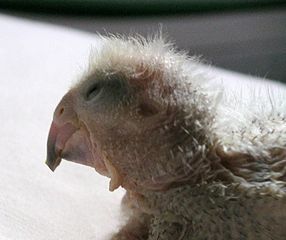 Please see Part I of this article for information on feeding winter residents, hummingbirds, and other summer visitors. Today we’ll take a look at bird baths, birding opportunities and luring bats and other small mammals.
Please see Part I of this article for information on feeding winter residents, hummingbirds, and other summer visitors. Today we’ll take a look at bird baths, birding opportunities and luring bats and other small mammals.
Birding Opportunities
Warm weather bird-feeding usually results in spectacular bird watching opportunities…driven to catch hundreds of insects daily, raise several broods and keep themselves fed as well, parent birds are far less cautious than at other times of the year.
Give our Audubon Bird Call Whistle a try. My first, received from my grandfather nearly half a decade ago, drew the attention of nearly every furred and feathered visitor to my childhood feeders. The Backyard Bird Tracker will help you to identify the birds you see and provides interesting life history details and a place for recording your observations.
Other Steps You Can Take
 Setting out bird baths within easy reach of your feeders will increase visitation, including by bird species that might not be interested in the foods you provide. For example, robins, which in most areas are earthworm specialists, will readily make use of bird baths.
Setting out bird baths within easy reach of your feeders will increase visitation, including by bird species that might not be interested in the foods you provide. For example, robins, which in most areas are earthworm specialists, will readily make use of bird baths.
A well-thought out garden (please see below) will encourage reluctant feeder-visitors to remain and forage upon insects, buds and other treats.
Mammals: Flying Squirrels, Gray Squirrels and Bats
Don’t forget your mammalian friends. Gray squirrels newly emerged from the nest are clumsy and even more entertaining than are adults. By providing squirrel feeders, corn logs and peanuts, you can limit competition with avian visitors and provide yourself with quite a show.
If flying squirrels are resident in your area, by all means install some indirect lighting and take a look at your feeders after dark. These adorable, nocturnal acrobats are quite fearless feeder users…trust me, you will not regret the effort. Resident even in the heart of NYC, flying squirrels do not reveal themselves in the daytime. A call to your local zoo or nature center should provide you with information concerning local populations.
While we’re on nocturnal mammals, let me not forget some of my favorites, the bats. I have rehabilitated a number of injured bats, and never tire of watching their nighttime hunting forays. A surprising variety of species inhabits the USA, even within most cities…try putting up a bat house and see what happens.
Further Reading
For information on planting a garden that will both attract wild visitors and provide nutritious food for your pets, please see my article Gardening for Birds.
A unique video showing northern flying squirrels using a backyard feeder is posted at:
http://www.youtube.com/watch?v=ZHuzmNBTquw
Oriole Image referenced from Wikipedia and originally posted by Badjoby.
Dendroica petechia image referenced from Wikipedia and originally posted by Mdf.
 That Bird Blog – Bird Care and History for Pet Birds
That Bird Blog – Bird Care and History for Pet Birds




Hi all spring and early summer we were feeding our birds in our yard. we feed them wildbird seed, and water and suet, we had tons and 10 bird houses were used to havebabies, but now I did’nt put it out for a couple days and there is not one bird anywhere none on the ground or in a tree or flying by, no chirping. Do you think you can help with this problem. Thanks so much Laurie : )
Hello Laurie, Frank Indiviglio here.
Thanks for your interest in our blog.
If the birds were being fed every day, they have most likely just spread out a bit and will return once a few notice that the food is back…word will travel fast! Also, depending upon where you are located, you may be seeing a normal change in feeding habits and movements. In late summer many species switch to an insect based diet to fuel migrations and to help prepare for winter. Cicadas and many other insects start to die off now, providing easy meals for awhile. Already in NY several species of warbler have begun to move south – slowly but surely. But as food availability changes again some species will be back.
Good luck and please keep me posted.
Best regards, Frank Indiviglio.